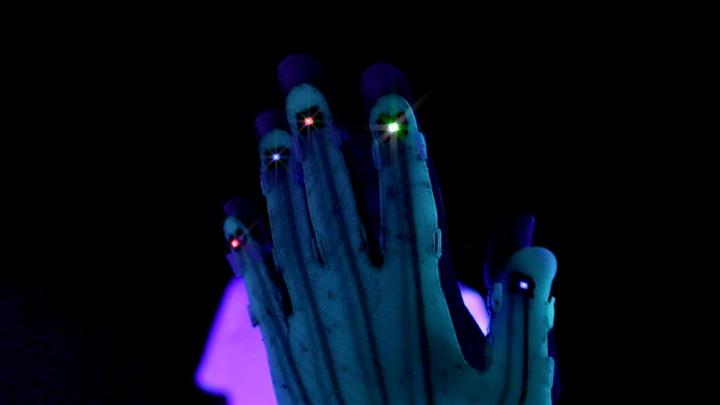
The Ruiz Brothers of Adafruit fame are a creative team from West Palm Beach, Florida who take influences like cartoons, visual effects, and videos games to build cool things with 3D printing and electronics. Back in 2013, the brothers shifted their focus to 3D printing, and they now design products and offer 3D printing services from their home studio.
The brothers say there are a few tricks which will come in handy and smooth the way to making your glove. One of those, scaling paths in Illustrator or Photoshop, requires that you not use millimeters as the units of measurements as that may cause unexpected scaling issues.
They also warn that you should test to make certain your hand isn’t too large to actually fit on your 3D printer’s bed before proceeding.
The project is powered with a coin cell battery, and they suggest running a print test of just the battery holder to ensure it has good tolerances and fits the battery you intend to use.
Attaching the NinjaFlex hand to the actual hand required the use of add tabs to each finger to be used as straps, and each finger has small slots through which straps or rubber bands as threaded to complete the mounts. The brothers say the straps can also be 3D printed in NinjaFlex.
They provided, of course, a detailed guide to show users how to use the conductive filament and glow-in-the-dark NinjaFlex to create this flexible, LED wearable.
To make the project, you will need NinjaFlex Glow in the Dark Filament, Diffused LEDs in 5mm and 3mm sizes or Adafruit LED Sequins, Conductive Filament from ProtoPasta, Bare Conductive Paint and a CR2032 Lithium Coin Cell battery.
You can download all the files you’ll need to get started at Adafruit, and they suggest that you print them with 20% infill at 45mm/s print speed and 120mm/s travel speed. All in all, the project took about 1.5 hours to print.